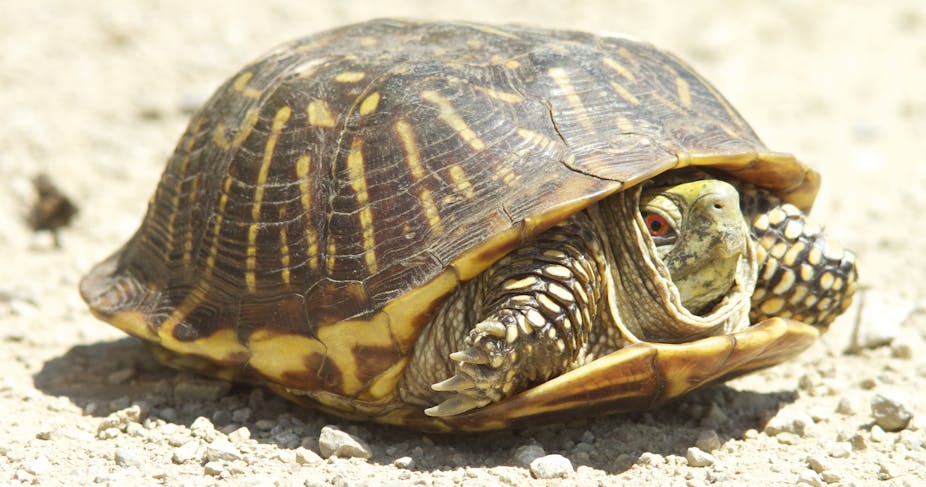The evolutionary history of turtles has always been a source of controversy in vertebrate palaeontology. When we give anatomy lectures at my university, we often tell students that “turtles might as well have come from outer space”. This is because a lack of fossils showing intermediate stages in their evolution is making it hard to trace their origins. But now scientists have discovered a 240m year-old turtle fossil that could begin to unravel the enigma.
Turtles and tortoises are remarkable creatures with a weird body that is very different from other reptile. But unfortunately there are very few fossils that tell us about the transition from early reptiles to turtles. In other words, modern turtles – with a bony upper shell, carapace, and an under-shell linked together by a series of bridges – seem to just pop up in the fossil record more than 200m years ago.

Although we know that turtles are reptiles (or at least that’s the current scientific consensus), their position within this major evolutionary branch of vertebrate animals has been greatly debated. Are they so-called diapsid reptiles, characterised by the presence of two distinctive skull openings behind the eye? This group includes all dinosaurs, flying reptiles and crocodiles, among others.
Because many living and fossil turtles completely lack skull openings in this position it has also long been suggested that these reptiles might comprise an entirely distinct branch, below the divergence of diapsids.
Who’s your Pappo?
The turtle described in the new paper is called Pappochelys, which literally means “the grandfather turtle”. The creature, which does not have a shell, appears to have been living in, or around, the Vellberg lake now preserved in 240m-year-old sediments at Eschenau, near Nuremberg in east Germany.
Pappochelys is hugely important because it fills in the anatomical gap between fossils thought to represent the earliest turtles in the stem of this evolutionary lineage and others that have fully-formed shells. This new German turtle did not just lack an outer shell, it did not have a fully formed under-shell, or plastron, either. This plastron was instead made up of a web of bony elements called gastralia, indicating that the plastron in modern turtles likely formed from fusion of these gastralia.

Another important feature of this turtle is that it did have two openings in the skull behind the eye. That means that there is now clear evidence that these vertebrates are indeed diapsids – higher up in the vertebrate family tree than much fossil evidence might have led us to believe. The shape of its skull also indicates that turtles were more closely related to lepidosaurs (such as lizards and snakes) than to archosaurs (such as dinosaurs and birds).
The researchers have also worked out that the turtle was about 20cm long and most likely semi-aquatic, living around and in the lake. They suggest that perhaps the complex turtle shell so characteristic of living forms first evolved not just for protecting soft internal body parts but also as a form of ballast for controlling buoyancy in lakes.

What’s also amazing about this discovery is the fact that fossils from the Vellberg lake have been known to science for more than 200 years. Yet specimens of Pappochelys were not found until 10 years ago and are just now being understood.

